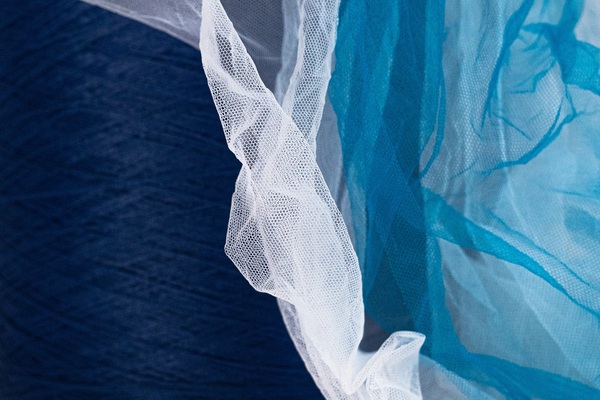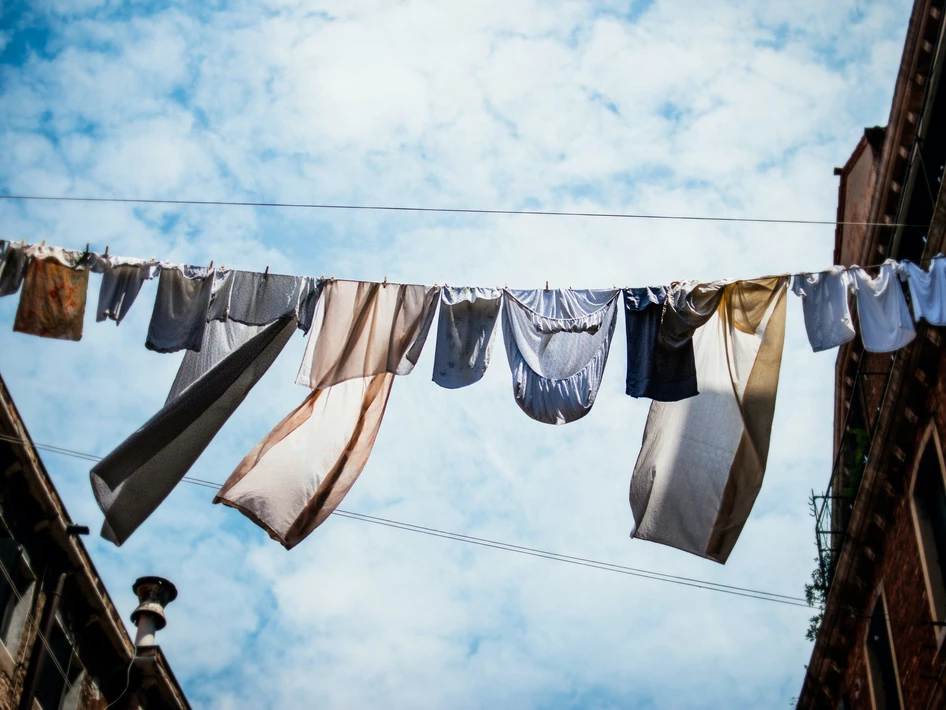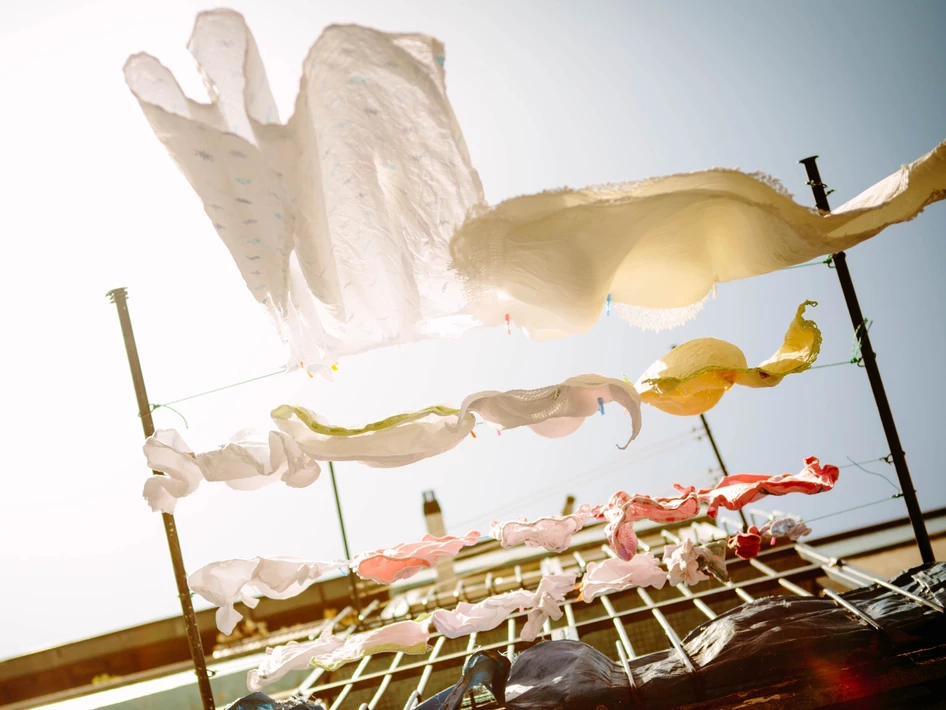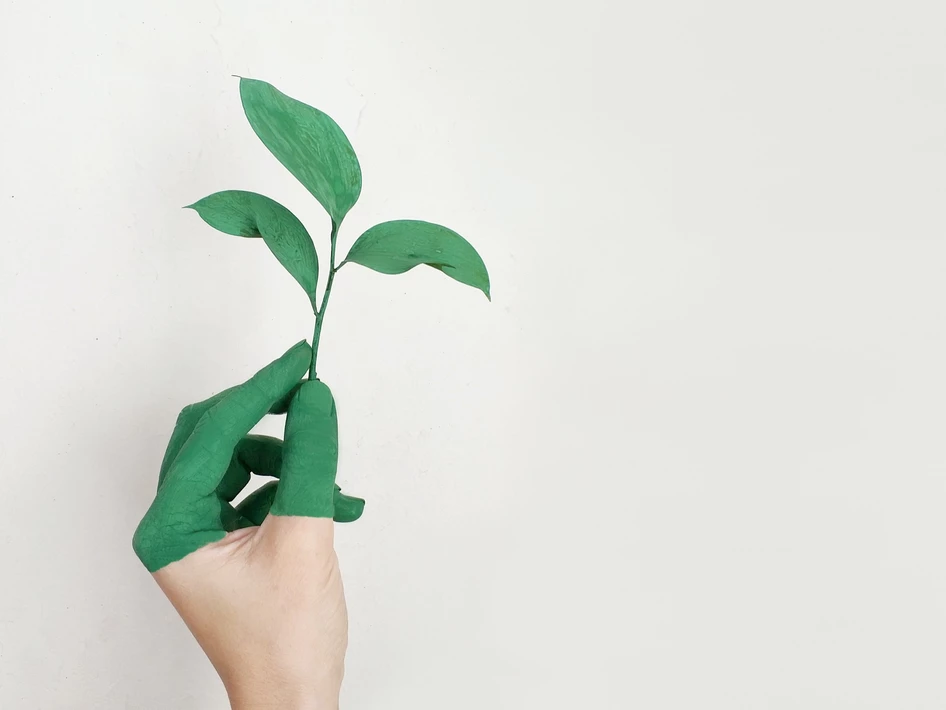The first commercially-manufactured NylonTM was developed in the 1930s, by a research team at the DuPont Fiber Company in Delaware, United States. Known as a ‘miracle fibre’, it was initially used in women’s hosiery, but has since made its way into every wardrobe. Because of its sweat- and dirt-resistant properties, it became the go-to fabric for swimwear, active wear, jackets and even parachutes and combat uniforms. Today, it can be found blended with other fabrics, to lend them its properties.
Nylon takes around 40 to 50 years to decompose. But in that time, it can wreak havoc on the planet and on marine life, particularly if disposed improperly. Take nylon fishing nets for example. If lost or cut, they’ve been found to choke marine life, as well as other wildlife.
According to a recent study published by the BBC, it is reported that by 2030, some 53 million tons of plastic will exist in our oceans, rivers and lakes. That is not all. Of the seven billion tonnes of plastic waste generated, globally, so far, less than 10 percent has been recycled. Just imagine the amount of plastic!
Enter, ECONYL…
To counter the ill effects of Nylon, the Aquafil group has developed a closed loop model (circular approach) through ECONYL®, a revolutionary innovation and Aquafil’s flagship product. Aquafil has been recycling Nylon since the 1990s but the fully circular manner of ECONYL’s production that is made entirely from Nylon 6 (semicrystalline polyamide) waste only came about in 2011. The chemical construction of the molecule, Nylon 6, makes it a perfect fit as it can be chemically recycled infinitely into regenerated Nylon 6 (ECONYL) without losing quality.
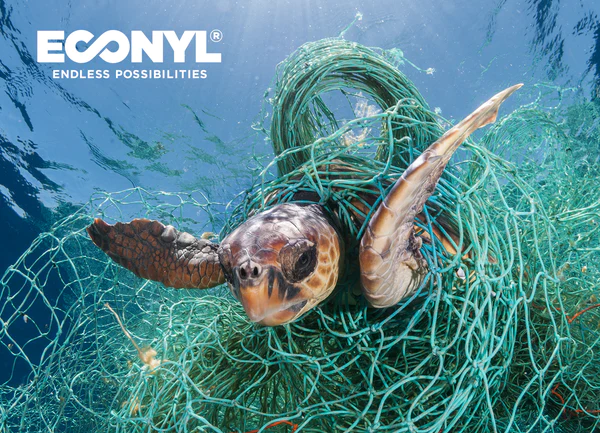
A viable alternative to conventional Nylon, Econyl fabric is definitely a hit among brands looking to move towards a more conscious business model. But like all good things, ECONYL has its limitations, too. Let’s see how it fares on our sustainability scale.
PRETTY FOR THE PLANET 4/5
Repurposing waste
‘When I see a landfill, I see a goldmine,’ says Giulio Bonazzi, Aquafil’s president and CEO. From retrieving fishing nets from oceans to using discarded synthetic carpets, Aquafil has developed a comprehensive supply chain to collect nylon waste that would otherwise end up in landfills and take years to degrade, adding to it the increasing risk of microplastics. So far they have retrieved 510 tonnes of fishing nets from the oceans, to be recycled into ECONYL. They are developing the yarn in collaboration with a number of mills from around the world, though primarily in Italy, supplying the fabric. According to the website, ECONYL regenerated nylon reduces the global warming impact of nylon by upto 90% compared with the material from oil.
‘We carefully monitor all materials that we incorporate into our products and use in our production processes, to avoid negative impacts on people and on the environment,’ says a representative from the Aquafil group. They regularly have their products analysed by third-party laboratories, and are OEKO-TEX 100 certified.
Better recyclability
Polyester has very poor recyclability,’ says George Harding-Rolls, a campaigner and strategist at Changing Markets. ‘99% of recycled polyester is currently being made from recycled plastic bottles–a false solution, as it removes valuable materials from closed-loop bottle-to-bottle recycling systems, and puts it into a linear system destined for landfill, incineration or dumping in the environment. Aquafil guarantees that ECONYL is derived from 100% nylon waste and can be recycled infinitely, without loss in quality or performance. A fact that Harding-Rolls believes makes ECONYL more sustainable than both virgin Nylon and recycled polyester.
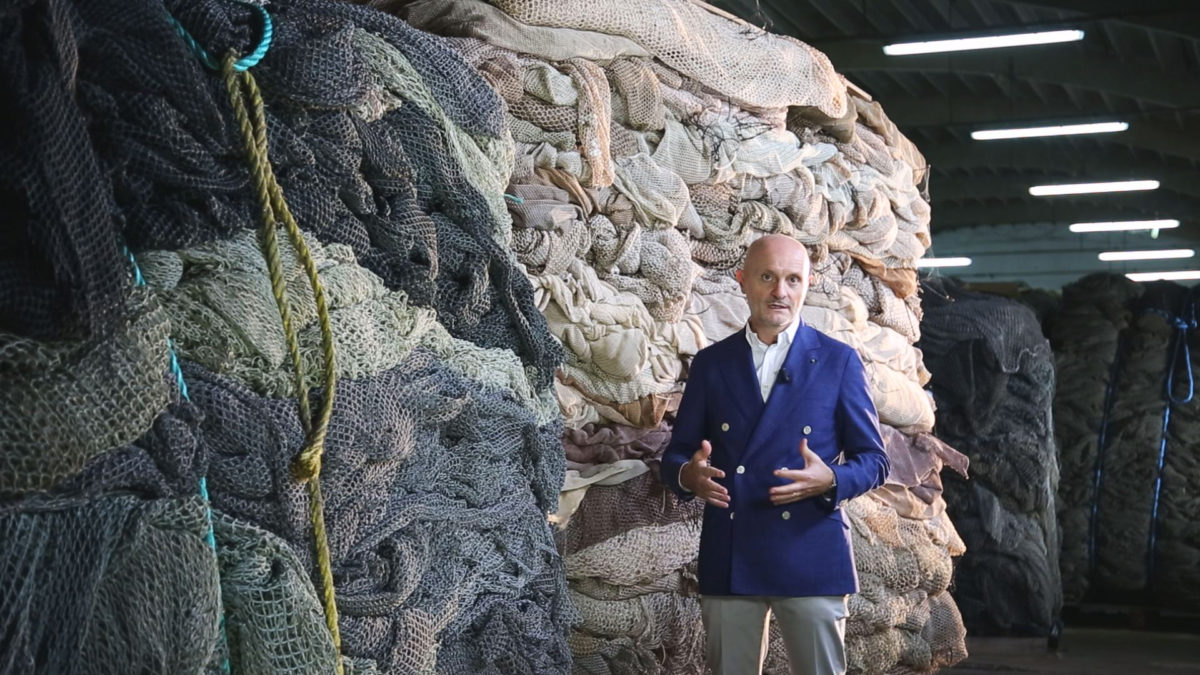
Carbon footprint from procurement
Due to the specialised nature of the fabric, the supply chain can get quite long, especially for Indian brands. Aquafil manufactures only the yarn, which then goes for production, dyeing and finishing of the woven fabric, to textiles mills such as Carvico and Jersey Lomellina, in Italy, which is where brands such as Esha Lal Swimwear and Athlos, obtain their Econyl fabric from. Given the steps and the distances involved, the supply chain gets quite long. However, as both brands agree, Aquafil has worked out a seamless process, and even has local distributors in place.
Shedding of microplastics
Econyl fabric may have solved the recyclability concerns of regular Nylon and polyester, but it still sheds microplastics. Aquafil admits this is a problem in the production, consumer as well as post-consumer phases. However, they add, Econyl is produced from recovered waste materials (such as fishing nets and used carpets), which would, in any case, shed microfibres and break down in marine environments. As with Econyl fabric, most of the waste has been converted into high-quality filament fibers.
According to Esha Lal, founder and designer of the eponymous swimwear brand, this shortcoming pales in comparison to benefits Econyl fabric offers. ‘All regular swimwear releases microplastics,’ she says. ‘Not only is this not virgin plastic, it is plastic that would’ve ended up in the ocean anyway.’
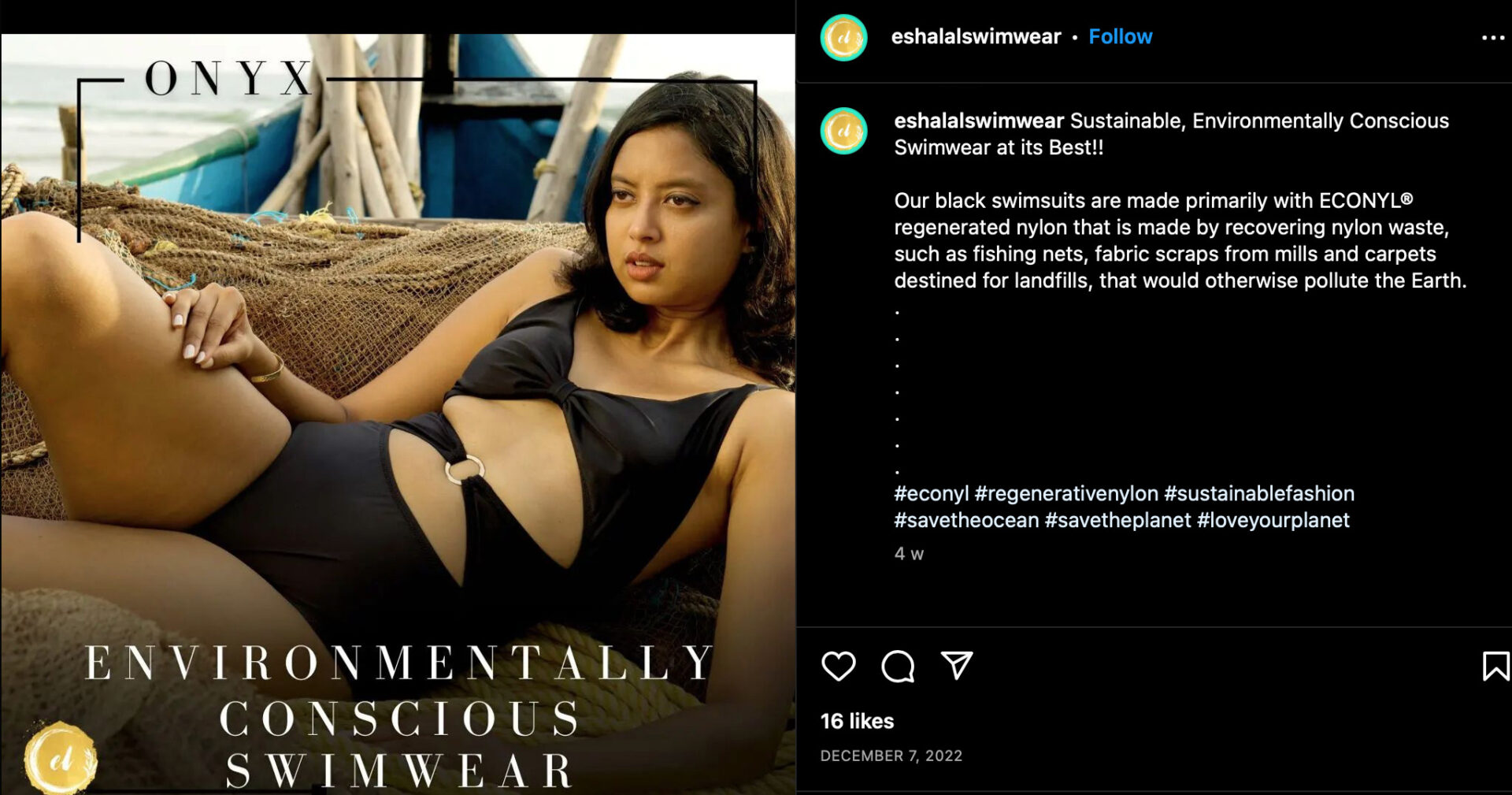
Post-consumer textile waste
As mentioned above, ECONYL is infinitely recyclable. However, whether or not the recycling is taking place, is a different concern, altogether. ‘We are working on a project centred on post-consumer textile waste, but we are still in a pilot phase,’ reveals the rep from Aquafil. ‘The majority of garments are made with blended material and it is not easy to separate the nylon part from the rest.’ It is interesting to note, ECONYL is not Cradle-to-Cradle certified. Or at least not yet!
Resurgent innovations
Aquafil recently announced the development of a plant-based nylon, based on cornstarch and sugarcane, which they claim will neutralise the negatives of ECONYL. We don’t yet know when this will be rolled out to commercial scale, but there has been a lot of interest from fashion brands.
However, as Harding-Rolls points out, this too has its limitations. ‘They will have to ensure that relying on this feedstock does not remove land from food production or create harmful knock-on effects,’ he elaborates. ‘For example, where land may be deforested to make way for sugarcane plantations to produce plant-based plastic. There are heavy environmental pressures caused by land-use at present, and avoiding scaling these up is vital for a holistic approach to sustainability.’
Harding-Rolls also doubts the biodegradability of this new plant-based nylon. ‘The manufacturer says it “can be” biodegradable, which is an open question, but one that needs to be clarified, to avoid adding to the waste crisis.’
PRETTY FOR PEOPLE 4/5
Transparent supply chain
Aquafil has two carpet recycling facilities in Phoenix and Woodland, CA, that can each process up to 36 million pounds of carpet annually and break old carpets down into three main components: polypropylene (PP), Nylon 6 and calcium carbonate. Nylon 6 is sent to the ECONYL Regeneration Process in Slovenia with other waste, like reclaimed fishing nets or textile scraps, to make ECONYL regenerated nylon for infinite uses. Also, Aquafil sources post-use PA6 yarn from Tarkett to create its regenerated ECONYL yarn. ‘We collect waste made of Nylon 6 and we collect only in big quantities (full containers of well-sorted and well-packed waste),’ reveals the rep from Aquafil, who was more than forthcoming to respond to all our queries.
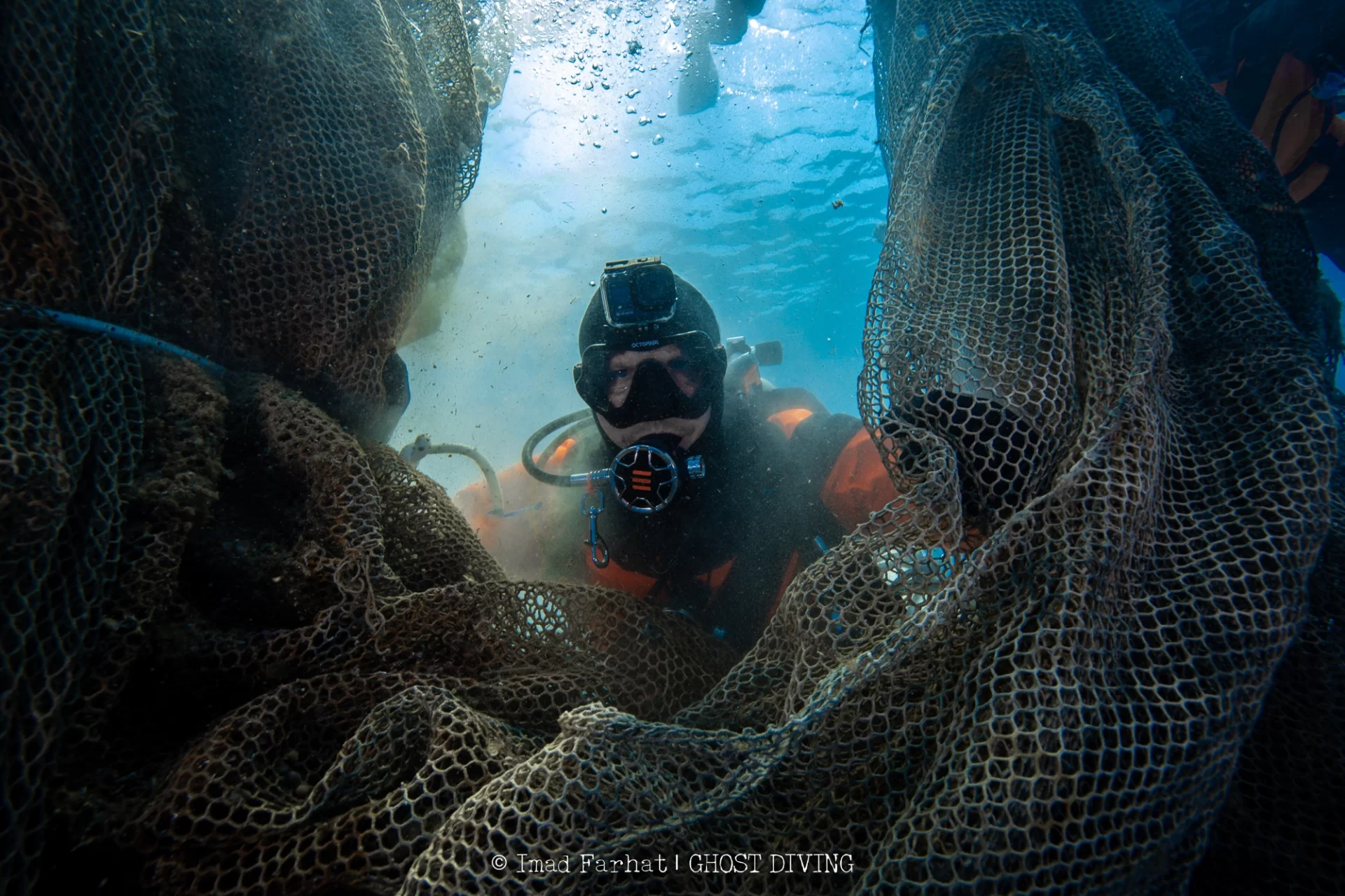
Healthy Seas, an initiative that Aquafil founded in 2013 with another business (Star Sock) and an NGO keeps oceans and seas clean of the derelict fishnets that may cause needless death of marine animals. These fishing nets recovered by volunteer divers, are first cleaned and sorted and then sent to Aquafil’s Slovenian regeneration plant. Apart from the fishing nets rescued by volunteer divers, Aquafil also uses nets coming from aquaculture and fish industries, for the regeneration of ECONYL.
Moreover, to evaluate a partnership, they gather details such as quantities, quality (a technical data sheet), and images of the waste. And only after these requirements are fulfilled, they further contact Reclaiming Managers.
Human health concerns
Working with recycling Nylon, which is a polyamide, obviously has its implications, especially for the people working with it during the production process. ‘Nylon clothing is also often treated with a variety of chemicals, bleaches and dyes that have environmental as well as human health concerns,’ says Harding-Rolls.
PRETTY FOR YOU 3.5/5
A brand favourite
Esha Lal Swimwear, a brand in India experimented with different fabrics, before finally landing on Econyl fabric for their collection. ‘We wanted to give something back to mother earth,’ says Esha Lal.
Athlos, an activewear brand that had been working with Bamboo and eucalyptus, stumbled upon ECONYL, while searching for an alternative on the internet. ‘Econyl, for us, was the best of both worlds,’ says Pravin Dhake, founder of Athlos. ‘Natural fabrics, being hydrophilic, tend to attract water and, therefore, have their limitations, especially when it comes to long-distance running.’ Econyl, on the other hand, fit right into their philosophy, as a comfortable and durable material.
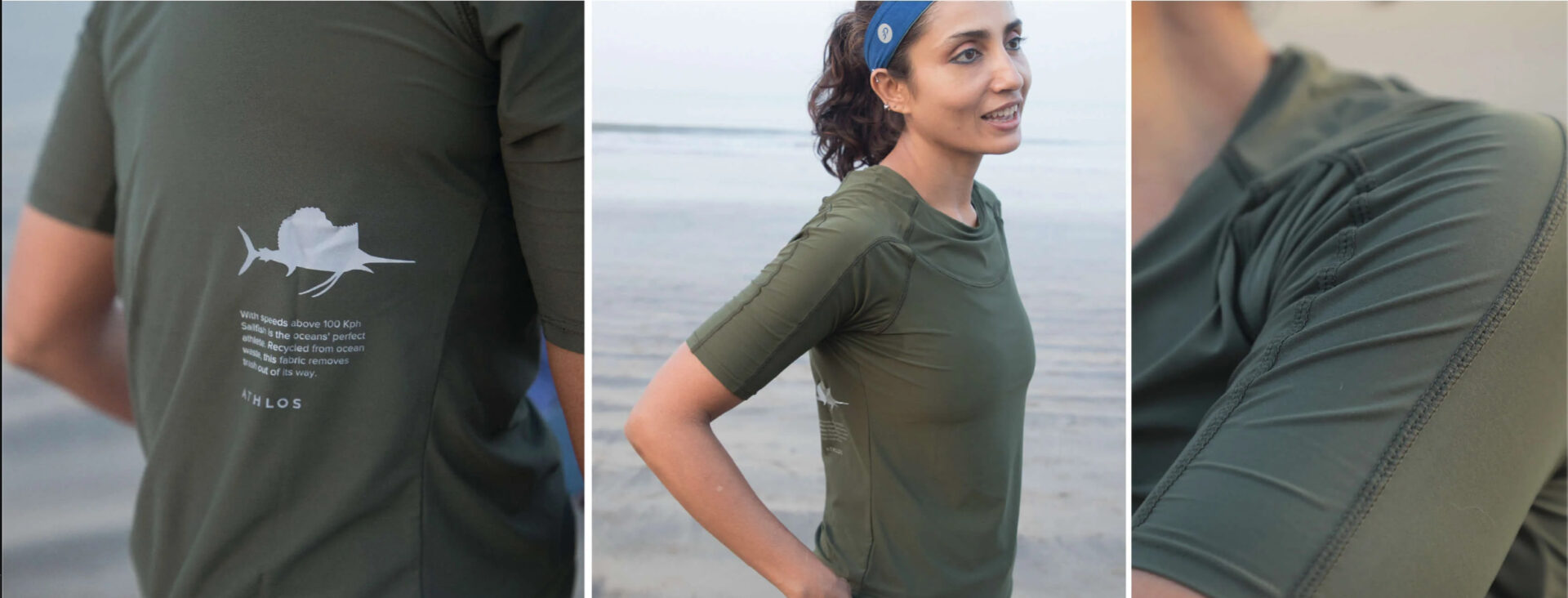
Aquafil is confident about the viability of ECONYL, as they proudly declare, ‘More than 2,000 fashion brands and more than 60 carpet manufacturers have already chosen Econyl and this gives us a glimpse of its excellent prospects.’ Among their various ongoing and upcoming R&D projects, Aquafil cites an example of the brand Napapijiri that unveiled Circular series, a 100% recyclable apparel collection, made entirely (including the filling and trims) of ECONYL. This project marks a decisive step, where the whole of the garment can be recycled and reimagined infinitely.
Inconvenient disposal
Harding-Rolls emphasizes that Econyl still is a synthetic fibre, and, therefore, non-biodegradable. ‘We’re not yet seeing investment into the sort of take-back infrastructure that would be needed to incentivise consumers to return their nylon products to ensure they can be recycled, repaired and/or reused,’ he elaborates. ‘Brands may well be marketing their use of recycled nylon, but if they’re not ensuring that the products can be recycled again, in future, they’re missing half the story and half the potential of sustainability gains.’

